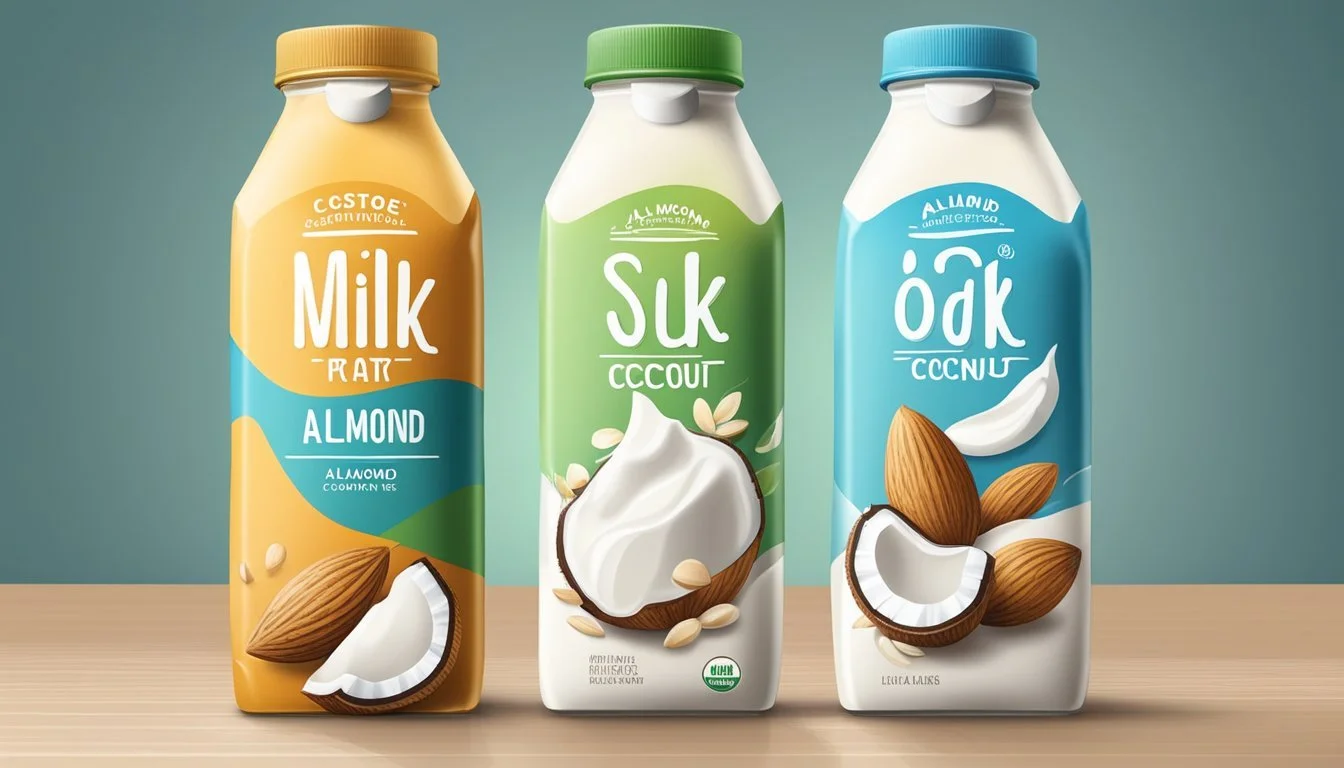What Are Some Lactose-Free Milk Alternatives?
Exploring Dairy-Free Options
With an increasing number of consumers seeking dairy alternatives, either due to lactose intolerance, milk allergies, or personal dietary choices, the market for lactose-free milk alternatives has expanded significantly. These alternatives provide similar culinary versatility as dairy milk, being suitable for uses ranging from baking to direct consumption in beverages like coffee or cereal. Many individuals choose these options not just as a necessity but also to embrace plant-based diets or to reduce their environmental impact.
Lactose-free milk alternatives come from various plant sources such as nuts, grains, and legumes. Each type offers a unique nutritional profile, often fortified to match the vitamins and minerals found in dairy milk, such as calcium and vitamin D. Soy milk, for example, is known for having a protein content comparable to that of dairy milk, making it a popular choice for those seeking a protein-rich, non-dairy alternative.
Considerations for consumers include not only nutritional value but also taste and consistency, which can differ significantly from traditional dairy milk. Some may prefer the creaminess of almond milk, whereas others may opt for the naturally sweet flavor of oat milk. These dairy-free alternatives not only accommodate dietary restrictions but also cater to a diverse palette of tastes and preferences, ensuring that there is an option suitable for virtually every consumer.
Types of Lactose-Free Milk Alternatives
For those with lactose intolerance or following a vegan diet, the variety of lactose-free milk alternatives available today offers both nutritional value and palatable variety. These plant-based milk alternatives are not only dairy-free but also often come fortified with vitamins and minerals to match the health benefits of traditional cow's milk.
Soy Milk
Soy milk, made from soybeans, is a popular non-dairy alternative that provides a protein content comparable to cow's milk. Often fortified with calcium and vitamins, it has a creamy texture and works well in a range of culinary applications.
Almond Milk
Almond milk is a low-calorie option rich in vitamin E and often fortified with calcium. With a nutty flavor and creamy consistency, it's a preferred choice for those watching their caloric intake without sacrificing taste.
Coconut Milk
Coconut milk stands out with its rich flavor and creamy texture. It is lower in protein but can be enriched with vitamins and minerals. Coconut milk adds a tropical twist to dishes and is perfect for those preferring a more flavorful alternative.
Rice Milk
Rice milk is the least allergenic of milk alternatives, making it a good choice for those with nut or soy allergies. It has a naturally sweet taste and a high carbohydrate count, but typically contains less protein than other plant-based options.
Oat Milk
Oat milk is appreciated for its fiber content and sweet, creamy taste. It's often enriched with calcium and protein to enhance its nutritional profile, making it a hearty addition to any diet.
Hemp Milk
Hemp milk is made from hemp seeds and offers a distinct nutty taste. It's a source of omega-3 fatty acids and is commonly fortified to bolster its calcium and protein content, beneficial for overall health.
Other Plant-Based Milk Alternatives
Numerous other non-dairy milks, like cashew, macadamia, pea, flax, hazelnut, and banana milk, are also popular alternatives. These nut milks provide unique flavors and nutritional profiles, often being rich in vitamins and with fewer saturated fats. They cater to a wide range of dietary preferences and needs.
Nutritional Comparison to Dairy Milk
Lactose-free milk alternatives offer diverse nutrition profiles, some closely mirroring that of dairy milk, while others deviate in certain aspects. These alternatives can be fortified to boost nutrient content but may naturally lack some of the key micronutrients found in dairy milk.
Protein Content
Dairy milk is known for its high protein content, typically offering about eight grams per cup. Soy milk stands out among plant-based options as it offers a similar amount of protein, making it a complete protein source. On the other hand, nut-based milks, such as almond or cashew, generally contain less protein, ranging from one to two grams per cup.
Carbohydrate and Sugar Content
In terms of carbohydrates, dairy milk contains naturally occurring sugars, while many lactose-free milk alternatives, especially unsweetened versions, have lower sugar content. Rice milk can have higher carbohydrate values, comparable to dairy milk, but typically comes from added sugar. Consumers looking to lower sugar intake should opt for unsweetened milk alternatives.
Fat Content and Heart Health
Dairy milk contains saturated fats, which can impact heart health if consumed in high amounts. Many plant-based milks, particularly unsweetened almond milk, are low in saturated fats and may contain omega-3 fatty acids, beneficial for heart health. However, it's important to read labels, as some alternatives may have added oils increasing the saturated fat content.
Vitamin and Mineral Fortification
While dairy milk is naturally high in nutrients like calcium and vitamin D, plant-based alternatives may not be, unless they are fortified. Fortified plant milks often contain calcium and vitamins comparable to or even exceeding those found in cow's milk. However, the bioavailability of these nutrients from plant sources can differ from dairy.
It is critical for consumers to examine nutritional labels to ensure they're getting essential micronutrients that might be missing from some non-dairy milks.
Health Considerations
Lactose-free milk alternatives present viable options for individuals with specific health considerations such as lactose intolerance, food allergies, or dietary restrictions. The right choice ensures both nutritional adequacy and avoidance of adverse reactions.
Managing Lactose Intolerance
People with lactose intolerance lack sufficient amounts of the enzyme lactase, which is essential for breaking down lactose in dairy products. Consuming lactose-free alternatives such as almond milk, soy milk, and oat milk enables these individuals to enjoy milk-like beverages without experiencing discomfort, as these alternatives do not contain lactose.
Allergies and Food Sensitivities
While opting for milk alternatives can be beneficial for managing lactose intolerance, it's crucial to consider potential allergies. For instance, soy and almonds, common bases for dairy-free milks, can also be allergens. Those with nut allergies should avoid almond and cashew milk, and those with soy allergies should steer clear of soy milk. However, options like hemp milk or oat milk may be suitable as they typically do not contain these allergens.
Dietary Restrictions and Choices
Milk alternatives also cater to various dietary choices. Vegans and vegetarians often avoid animal products, making plant-based milks a suitable part of their diet. Moreover, these alternatives can support other dietary restrictions, whether due to religious beliefs or personal health goals. For example, some people may choose dairy-free milk to reduce fat intake or avoid hormones found in cow's milk.
Usage in Cooking and Beverages
Lactose-free milk alternatives have distinctive tastes and properties that affect their performance in cooking and beverage applications. Each option brings a unique flavor profile to dishes and drinks, from the delicate sweetness of almond milk to the creamy richness of coconut milk.
Culinary Applications
Cereal: Soy and almond milks are popular choices for cereal, due to their neutral to slightly nutty flavors.
Baking: Coconut and oat milks provide moisture and sweetness to baked goods. They are excellent for cakes and muffins.
Desserts: Rice milk, with its natural sweetness, complements desserts well, especially those which are lightly flavored.
Recipes: Hemp milk, because of its hearty and earthy taste, may be more suitable for savory recipes.
Pairing with Coffee and Smoothies
Coffee: Baristas often use soy and almond milks for lattes because these alternatives froth well and have flavors that complement coffee.
Smoothies: Coconut and oat milks are often used in smoothies to add creaminess without overpowering the taste of fruits and other ingredients.
Buying Guide
When searching for the ideal lactose-free milk alternative, one should meticulously analyze product labels and consider personal nutritional requirements and taste preferences. The guide below will assist in making an informed decision, ensuring they find a product that aligns with their needs.
Understanding Labels
Nutritional Content: Always examine the nutrition facts panel. Look for amounts of protein, calcium, vitamin D, and other nutrients to ensure they meet one's dietary needs. Compare these levels with those of regular milk if necessary.
Ingredients: One should scrutinize the ingredients list for items such as added sugars in sweetened versions versus unsweetened options, and consider choosing organic alternatives to avoid pesticides and additives.
Fortification: Fortification is key, especially for nutrients like calcium and vitamin B12 which are naturally present in cow's milk. Ensure that the alternative chosen is fortified to support one's nutritional needs.
Tips for Choosing the Right Alternative
Taste Preferences: One's palate plays a significant role. Taste can vary widely between soy, almond, oat, and other plant-based milks, so consider trying small quantities to identify what suits one best.
Dietary Restrictions: For those consulting with a registered dietitian or with specific nutritional needs, it's crucial to select milk alternatives that comply with these guidelines.
Balance Between Nutrition and Ease: Generally, store-bought milk alternatives are convenient and often come fortified with essential nutrients. However, one should ensure that the nutritional benefits align with personal health goals.
Environmental and Ethical Considerations
When examining lactose-free milk alternatives, consumers are increasingly cognizant of both environmental and ethical issues. These concerns play a significant role when choosing between dairy and plant-based options.
Sustainability: Plant-based milks often boast a lower carbon footprint compared to traditional dairy. For instance, almond milk production generally requires less water than dairy farming. However, it is important to consider regional variances; almonds require a significant amount of water, and their cultivation is concentrated in drought-prone areas like California.
Environmental Impact:
Water Usage: Almond milk requires more water for production than some other plant-based alternatives, such as oat milk.
Land Use: Plant-based alternatives typically require less land than dairy farms, reducing habitat disruption and deforestation.
Greenhouse Gases: The dairy industry is a notable contributor to methane emissions, a potent greenhouse gas, whereas plant-based milks often result in lower emissions.
Ethical Considerations:
Animal Welfare: Plant-based milk eliminates concerns related to animal welfare inherent in the dairy industry.
Labor Rights: Ethical considerations also extend to the treatment of workers. Some crops, like almonds, may have issues related to labor conditions that conscientious consumers consider.
Each alternative comes with its unique set of environmental and ethical implications, urging buyers to deliberate over their choices and prioritize based on personal values and the comparative impacts of these milk options.
Conclusion
Consumers seeking lactose-free milk alternatives can confidently navigate the diverse options available based on their dietary needs and preferences. Almond milk, characterized by its low-calorie profile and minimal ingredient list, is a popular choice for those watching calorie intake. Soy milk, with its close nutritional resemblance to cow's milk, is a solid option for people needing higher protein content.
Oat milk stands out for its fiber content, though buyers should check for added sugars. Lactose-free cow's milk provides the nutritional benefits of conventional cow's milk while being accessible to those with lactose intolerance. Additionally, milk from cashews is enriched with vitamin E, and although hemp milk may offer lesser protein than some alternatives, it compensates with other nutrients.
In making a knowledgeable choice, individuals must consider:
Nutritional Value: Compare protein, calcium, and vitamin content.
Dietary Compatibility: Choose an option that fits within any dietary restrictions.
Flavor and Texture: Select based on individual taste preference and culinary use.
An informed decision requires attention to product labels and nutritional facts, ensuring that the selected lactose-free alternative aligns with one's health goals and dietary requirements. Each alternative has distinct attributes, and the optimal choice varies among individuals.







